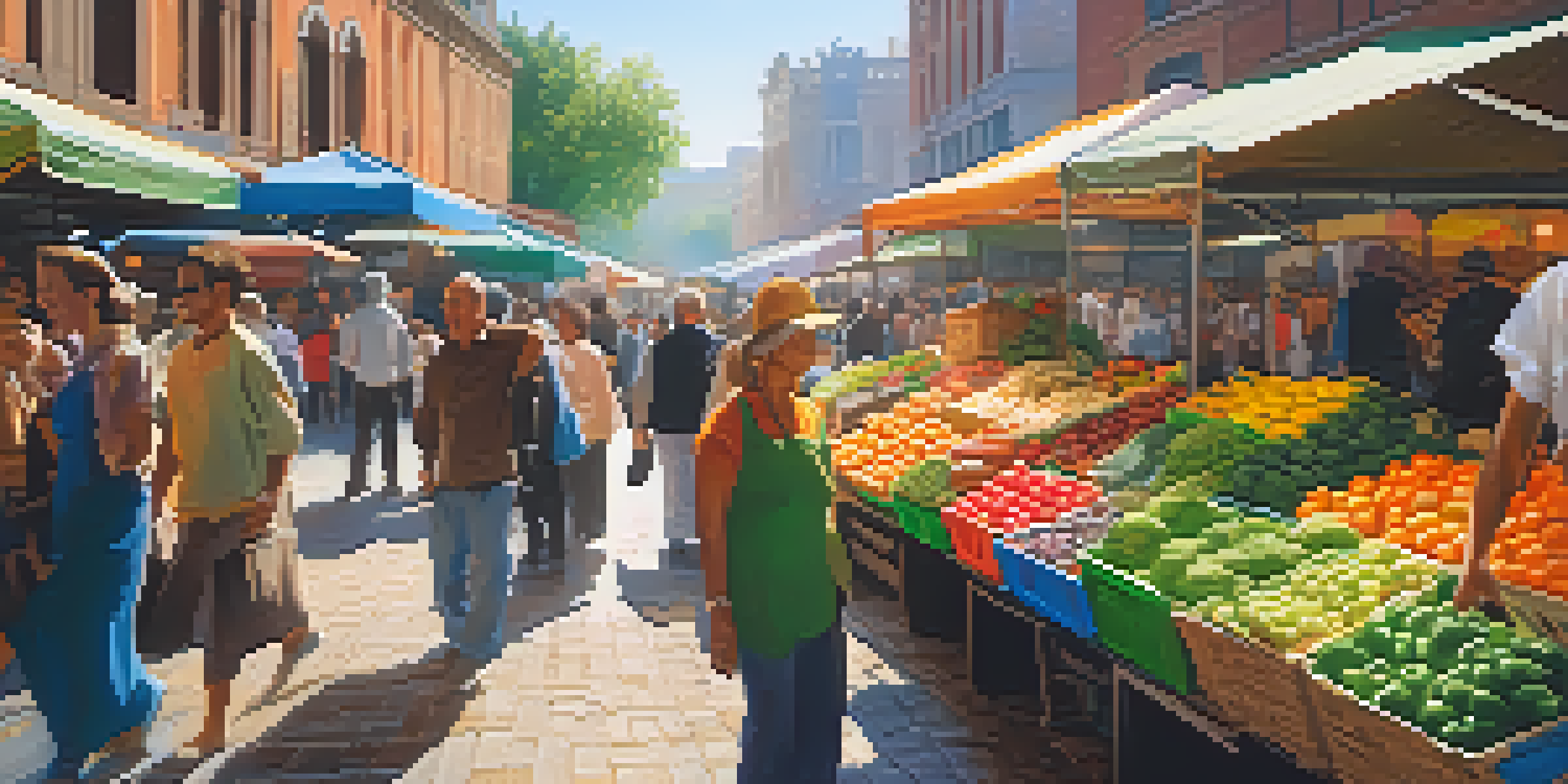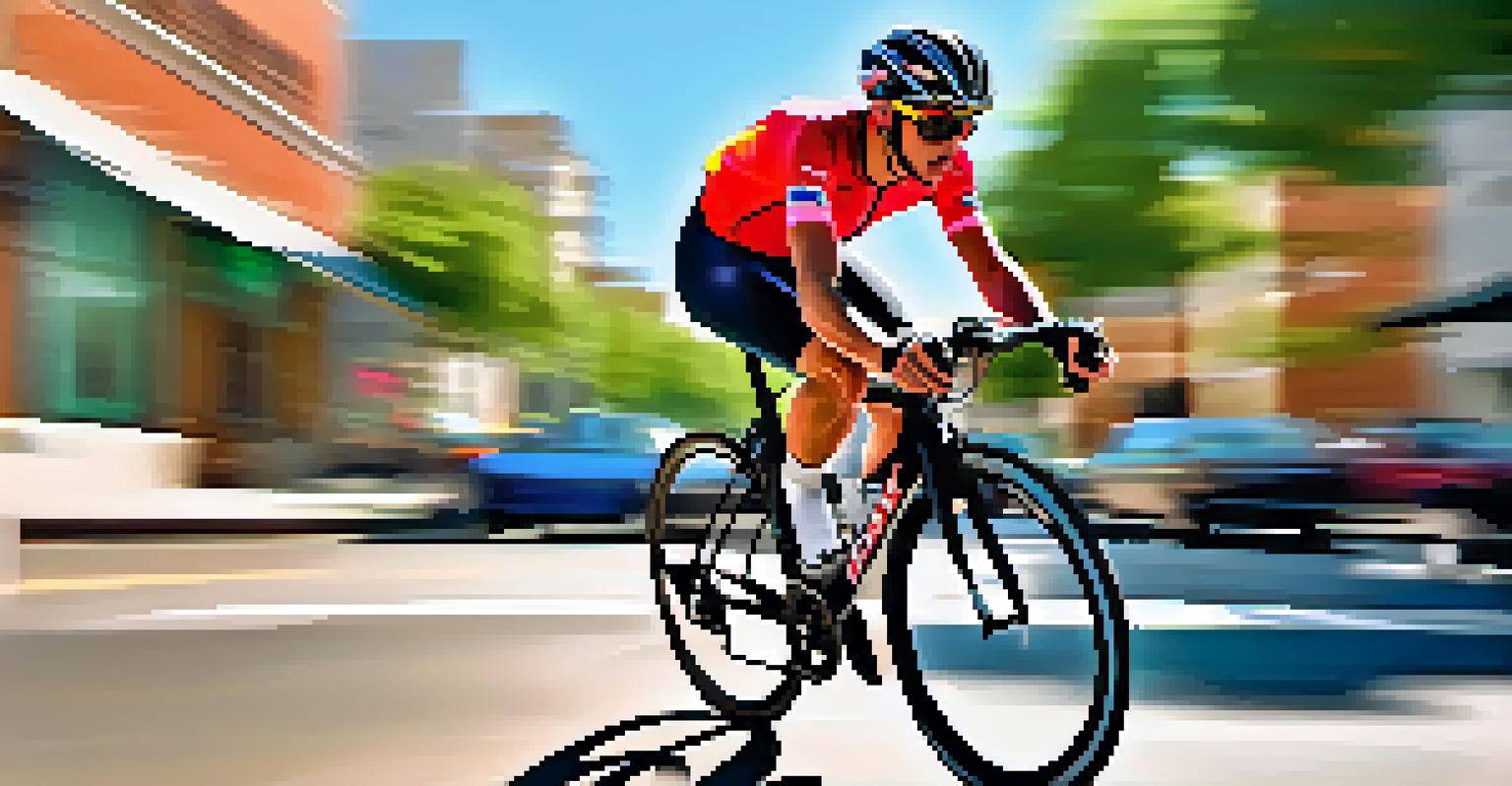Capturing Movement: Dynamic Travel Photography Techniques

Understanding the Essence of Movement in Photography
Movement is a vital element in photography that can evoke emotions and tell a story. When capturing travel moments, understanding how to convey movement can transform a still image into a vibrant narrative. Think of a bustling market scene or a child running on a beach; these images thrive on motion, making viewers feel as if they're part of the action.
Photography is the story I fail to put into words.
To master movement in photography, start by observing your surroundings. Notice how people interact, how vehicles move, and how nature flows. This awareness will help you anticipate moments worth capturing, allowing you to be in the right place at the right time.
Incorporating movement into your shots can also be a great way to showcase the culture of a destination. From dancers in traditional attire to the chaotic rhythm of city life, movement adds an authentic layer to your travel photography.
Choosing the Right Camera Settings for Action Shots
To effectively capture movement, selecting the right camera settings is crucial. A fast shutter speed is your best friend when freezing action; settings like 1/500th of a second or faster can help eliminate blur. However, if you want to create a sense of motion, slower shutter speeds can produce beautiful effects, like the blurring of a running athlete.

Don't forget to adjust your ISO and aperture accordingly. A higher ISO can allow faster shutter speeds in low light, while a wider aperture can create a pleasing depth of field, isolating your subject against a blurred background. Experimenting with these settings will help you find the perfect balance.
Mastering Movement in Photography
Understanding and capturing movement can transform still images into vibrant narratives that evoke emotions.
Always remember to keep your camera steady, especially when using slower speeds. A tripod or image stabilization features can make a significant difference, ensuring your images are sharp and clear, even in motion.
Utilizing Panning Techniques for Dynamic Effects
Panning is a technique that involves moving your camera in sync with a moving subject, resulting in a sharp subject against a blurred background. This effect can add excitement and a sense of speed to your travel photos. To practice panning, select a moving subject, like a cyclist or a car, and follow it with your camera as you take the shot.
The best thing about a picture is that it never changes, even when the people in it do.
Start with a slower shutter speed, such as 1/125th of a second, and gradually adjust until you achieve the desired effect. The key is to maintain a smooth and steady motion while capturing the image, which can take a bit of practice. Don't be discouraged if your first attempts don’t turn out perfect—keep experimenting!
Panning works beautifully in various settings, from bustling city streets to serene landscapes. It invites viewers to feel the energy of the moment, making your travel photography not just a visual experience but a dynamic one.
Incorporating Long Exposure for Creative Movement
Long exposure photography is another exciting way to capture movement. By using a slower shutter speed—ranging from a few seconds to even minutes—you can create stunning effects, such as the silky smoothness of flowing water or the streaks of light from passing cars. This technique allows you to depict time and movement in a unique way.
To achieve long exposure shots, you'll need a tripod to keep your camera steady. Neutral density filters can also help by reducing the amount of light entering your lens, allowing for longer exposures during the day. Experimenting with this technique can lead to remarkable and dreamlike images.
Optimal Camera Settings for Action
Selecting the right camera settings, like fast shutter speeds and proper ISO, is crucial for effectively capturing movement.
Remember, patience is key with long exposures. Whether you're capturing the stars in the night sky or the gentle waves of the ocean, take your time to set up and refine your composition. The results can be breathtaking and often unexpected.
Capturing Candid Moments in Motion
Candid photography thrives on spontaneity, making it an ideal technique for capturing movement during your travels. The beauty of candid shots lies in their authenticity; these moments often portray genuine emotions and interactions. To capture these fleeting instances, stay alert and ready to shoot without disrupting the scene.
A great way to enhance your candid photography is to use a longer focal length lens. This allows you to capture moments from a distance without intruding on people's space. It’s like being a fly on the wall, witnessing life unfold naturally.
Don’t hesitate to engage with your surroundings. Sometimes, a friendly smile or a simple conversation can lead to the most memorable shots. People often appreciate being photographed when they feel a connection, resulting in candid images that reflect the heart of a destination.
Experimenting with Different Angles for Unique Perspectives
One way to elevate your travel photography is by experimenting with different angles. Shooting from a low angle can make a subject appear more dramatic, while a high angle can provide a fresh overview of a scene. This variation helps convey different emotions and narratives within your photos.
When capturing movement, consider the direction of the action. Positioning yourself at an angle that complements the movement can enhance the dynamics of your shot. For instance, if a dancer is leaping to the right, positioning yourself to the left and slightly below can create a sense of upward motion.
Enhancing Images with Editing
Post-processing techniques, such as adding motion blur and thoughtful cropping, can enhance the representation of movement in your photos.
Keep your environment in mind as well; sometimes the unexpected elements around your subject can add context and depth to your images. Surrounding architecture, natural landscapes, and even everyday objects can transform a simple shot into a captivating story.
Editing Techniques to Enhance Movement in Photos
Post-processing is an essential part of modern photography, especially for enhancing movement in your images. Programs like Adobe Lightroom or Photoshop allow you to adjust exposure, contrast, and colors to bring out the energy in your shots. Subtle tweaks can greatly improve the overall impact of your photos.
Consider adding motion blur effects for dramatic flair. This can amplify the feeling of speed or chaos, particularly in urban settings. However, be cautious not to overdo it; the goal is to enhance, not distract from the subject's movement.

Finally, don’t forget to crop your images thoughtfully. This can help focus attention on the movement and eliminate any distracting elements. A well-edited photo not only captures movement but also tells a clearer story, inviting viewers into the experience.